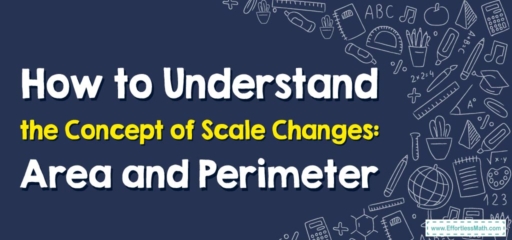How to Understand the Concept of Scale Changes: Area and Perimeter
In the realm of geometry, understanding the concept of scale is crucial for accurate calculations and measurements. When it comes to determining the area and perimeter of shapes, scale changes play a significant role in altering their dimensions. This article delves into the fascinating world of scale changes in area and perimeter calculations. By mastering the art of scale changes, you will gain a deeper understanding of geometric properties and enhance your ability to accurately analyze and manipulate shapes.
[include_netrun_products_block from-products="product/6-south-carolina-sc-ready-grade-3-math-practice-tests/" product-list-class="bundle-products float-left" product-item-class="float-left" product-item-image-container-class="p-0 float-left" product-item-image-container-size="col-2" product-item-image-container-custom-style="" product-item-container-size="" product-item-add-to-cart-class="btn-accent btn-purchase-ajax" product-item-button-custom-url="{url}/?ajax-add-to-cart={id}" product-item-button-custom-url-if-not-salable="{productUrl} product-item-container-class="" product-item-element-order="image,title,purchase,price" product-item-title-size="" product-item-title-wrapper-size="col-10" product-item-title-tag="h3" product-item-title-class="mt-0" product-item-title-wrapper-class="float-left pr-0" product-item-price-size="" product-item-purchase-size="" product-item-purchase-wrapper-size="" product-item-price-wrapper-class="pr-0 float-left" product-item-price-wrapper-size="col-10" product-item-read-more-text="" product-item-add-to-cart-text="" product-item-add-to-cart-custom-attribute="title='Purchase this book with single click'" product-item-thumbnail-size="290-380" show-details="false" show-excerpt="false" paginate="false" lazy-load="true"]

A Step-by-step Guide to Understanding the Concept of Scale Changes: Area and Perimeter
Sure, let’s go through this concept step by step.
Understand the Basic Concepts: Area and Perimeter
Perimeter: The perimeter is the length of the boundary of a two-dimensional shape. For example, in a rectangle, the perimeter can be calculated as twice the sum of length and breadth.
Area: The area is the amount of space inside a two-dimensional shape. For a rectangle, the area can be calculated as the product of its length and width.
Understand the Concept of Scale
Scale is a ratio that compares the size of a model or map to the real world. For example, if a map’s scale is \(1:100,000\), it means \(1\) cm on the map represents \(100,000\) cm (or \(1\) km) in the real world. This concept can also be applied to geometric shapes.
Effect of Scale on Perimeter
When we apply a scale factor to a two-dimensional shape, the perimeter will change by the same scale factor. For example, if we have a rectangle with a perimeter of \(12\) units and we double the scale (scale factor of \(2\)), the new perimeter will be \(24\) units.
In other words, if the length and width (or any other dimensions involved in the perimeter calculation) of a shape are multiplied by a scale factor of ‘\(k\)’, the perimeter of the new shape will be ‘\(k\)’ times the original perimeter.
Effect of Scale on Area
The effect of scale on the area is a little different than its effect on the perimeter. When we scale a two-dimensional shape, the area will change by the scale factor squared. This means that if we double the scale (scale factor of \(2\)), the new area will be \(4\) times the original area.
This occurs because the area is calculated by multiplying two dimensions together. So, if both dimensions are multiplied by a scale factor of ‘\(k\)’, the new area will be ‘\(k^2\)’ times the original area.
Examples
Suppose you have a rectangle with a length of \(3\) units and a width of \(2\) units. The perimeter is \(2(3+2) = 10\) units and the area is \(3 \times 2 = 6\) square units.
Now, if we increase the scale by a factor of 3, the new length is \(3 \times 3 = 9\) units and the new width is \(2 \times 3 = 6\) units. The new perimeter is \(2(9+6) = 30\) units and the new area is \(9 \times 6 = 54\) square units.
As you can see, the new perimeter is \(3\) times the original perimeter, and the new area is \(9\) (or \(3^2\)) times the original area.
Remember that this property holds true for all regular polygons, not just rectangles.
So that’s a step-by-step understanding of the topic ‘Area and Perimeter: Scale Changes’. Do let me know if you have any questions or if there’s anything you’d like to dive deeper into!
Related to This Article
More math articles
- The Ultimate Praxis Core Math Formula Cheat Sheet
- Best Online Math Tutoring Devices
- Addition of Four-Digit Numbers
- Repeating Decimals
- How to Solve Word Problems: Guessing and Checking
- FREE 8th Grade SBAC Math Practice Test
- How to Find Independent and Dependent Variables in Tables and Graphs?
- From Simple to Complex: Calculus of Surfaces
- 5th Grade NSCAS Math Worksheets: FREE & Printable
- Top 10 Tips to Overcome ACCUPLACER Math Anxiety





































What people say about "How to Understand the Concept of Scale Changes: Area and Perimeter - Effortless Math: We Help Students Learn to LOVE Mathematics"?
No one replied yet.